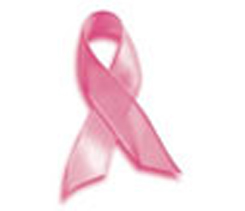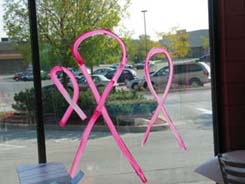Breast cancer is the most commonly diagnosed cancer among American women, other than skin cancer. Mammograms are the best way to detect breast cancer.
October is Breast Cancer Awareness Month and we are celebrating two decades of advances in awareness, education, and survival rates. Breast cancer is still the most commonly diagnosed cancer and the second leading cause of cancer deaths among women in the United States. The American Cancer Society reports that one in eight women will be diagnosed with breast cancer, but regular monthly breast self-exams and yearly mammograms can aid in early detection, significantly increasing the chances of survival.
You are never too young to start screening for breast cancer. Researchers have found that 96 percent of women who find and treat breast cancer early will be cancer-free after five years.
Breast cancer is:
- The most common cause of death from cancer among Hispanic women.
- The second most common cause of death from cancer among white, black, Asian/Pacific Islander, and American Indian/Alaska Native women.
In 2004, 186,772 women were diagnosed with breast cancer, and 40,954 women died from the disease.
Men can also get breast cancer. In 2004, 1,815 men were diagnosed with breast cancer, and 362 men died from the disease.
There are different kinds of breast cancer. The kind of breast cancer depends on which cells in the breast turn into cancer. Breast cancer can begin in different parts of the breast, like the ducts or the glands (or lobules).
What is a Mammogram?
A mammogram is an X-ray of the breast. Mammograms are the best method to detect breast cancer early when it is easier to treat and before it is big enough to feel or cause symptoms.
Having regular mammograms can lower the risk of dying from breast cancer. If you are age 40 years or older, be sure to have a screening mammogram every 1 to 2 years. Talk to your doctor if you have any breast symptoms or changes in your breast, or if breast cancer runs in your family. He or she may recommend that you have mammograms before age 40 or more often than usual.
Where Can I Go to Get a Mammogram?
If you have a regular doctor, talk to him or her about getting a mammogram. Most private health insurance companies, HMOs, Medicaid, and Medicare pay for part or all of the cost of mammograms. Check with your plan for details.
Are You Worried about the Cost?
If you don't have health insurance and need help finding a low-cost or free mammogram, check with your local hospital, health department, women’s center, or other community group. CDC also has a program called the National Breast and Cervical Cancer Early Detection Program (NBCCEDP). The program offers free or low-cost mammograms. To find out if you qualify, call your local program.
More Ways to Lower Your Risk
- Control your weight and exercise. Make healthy choices in the foods you eat and the kinds of drinks you have each day. Stay active.
- Know your family history of breast cancer. If you have a mother, sister, or daughter with breast cancer, ask your doctor what is your risk of getting breast cancer and how you can lower your risk.
- Find out the risks and benefits of hormone replacement therapy. Ask your doctor about the risks and benefits of hormone replacement therapy and find out if hormone replacement therapy is right for you.
- Limit the amount of alcohol you drink.
Educating Your Neighbors about Breast Cancer
Many of your neighbors may benefit from a better understanding of Breast Cancer – it might even save their lives! Breast Cancer Awareness Month in October is an excellent opportunity to organize a breast cancer educational event for your community.
If an organized event is not reasonable, consider creating an educational display for your health center, community center, pool, club house, park, or wherever your neighbors congregate.
Neighborhood Link suggests the teaching tools below from the Centers for Disease Control.
These resources are produced by the Centers for Disease Control and are therefore not bound by typical copyright laws and can be legally reprinted and used in your efforts to educate your neighbors.
For Table and Bulletin Board Displays
 What You Need To Know About™ Breast Cancer
What You Need To Know About™ Breast Cancer  Common Breast Changes: Things To Know
Common Breast Changes: Things To Know  Mammograms, Not Just Once, but for a Lifetime
Mammograms, Not Just Once, but for a Lifetime Surgery Choices for Women With Early-Stage Breast Cancer
Surgery Choices for Women With Early-Stage Breast Cancer- Mammograms and Breast Health (
 579 KB, 24 pages)
579 KB, 24 pages)
 Print
Print Email
Email










